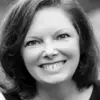[[{"fid":"23562","view_mode":"media_original","type":"media","attributes":{"height":512,"width":600,"style":"width: 180px; height: 154px; margin: 5px; float: left;","alt":" - m-jeff","class":"media-element file-media-original"}}]]As president of a community hospital in suburban Boston, and a practicing vascular medicine specialist myself, I am terribly worried about the deterioration in the morale of my physician colleagues. They feel devalued, overwhelmed by administrative burden and are permanently tethered to computer screens. This is particularly evident among the primary care physician workforce. My hospital employs over 270 physicians representing many specialties. I am focused and committed to restore joy to the professional lives of my medical staff. I am looking at creative ways to make interacting with our electronic health record easier. I am investigating novel compensation plans that promote behaviors that align physicians and our health system. I am regularly interacting with my medical staff, listening to issues and evaluating solutions. Most important, I am discussing the challenges facing U.S. physicians on a regular basis with colleagues around the country, hopeful that successful pilots elsewhere would be applicable to my colleagues.
Michael R. Jaff, DO
President, Newton-Wellesley Hospital; Professor of Medicine, Harvard Medical School, Boston
[[{"fid":"23563","view_mode":"media_original","type":"media","attributes":{"height":512,"width":600,"style":"width: 180px; height: 154px; margin: 5px; float: left;","alt":" - r-silver","class":"media-element file-media-original"}}]]Workplace stress in many instances can be good, leading us to grow professionally and develop efficiencies. Extremes in stress, however, can lead to physical and emotional distress, cynicism dealing with colleagues and a loss of empathy caring for our clients. I am fortunate to work with a cohesive group of nurse practitioners and nurses, a team built on a model of flexibility, all moving toward the same goal of keeping up with a busy case load, responding to patient problems and pitching in when others are overwhelmed. Tracking volume and productivity data, a tedious and time-consuming task, provides our group with objective data related to increasing demands, and recently justified the hire of an additional team member.
It helps to have the awareness during particularly stressful times to pause and recall that our primary purpose during all the frenzy is caring for human beings in need of help.
Rena L. Silver, APN, CNP
Nurse Practitioner, Cardiology, NorthShore University HealthSystems, Evanston Hospital, Chicago
